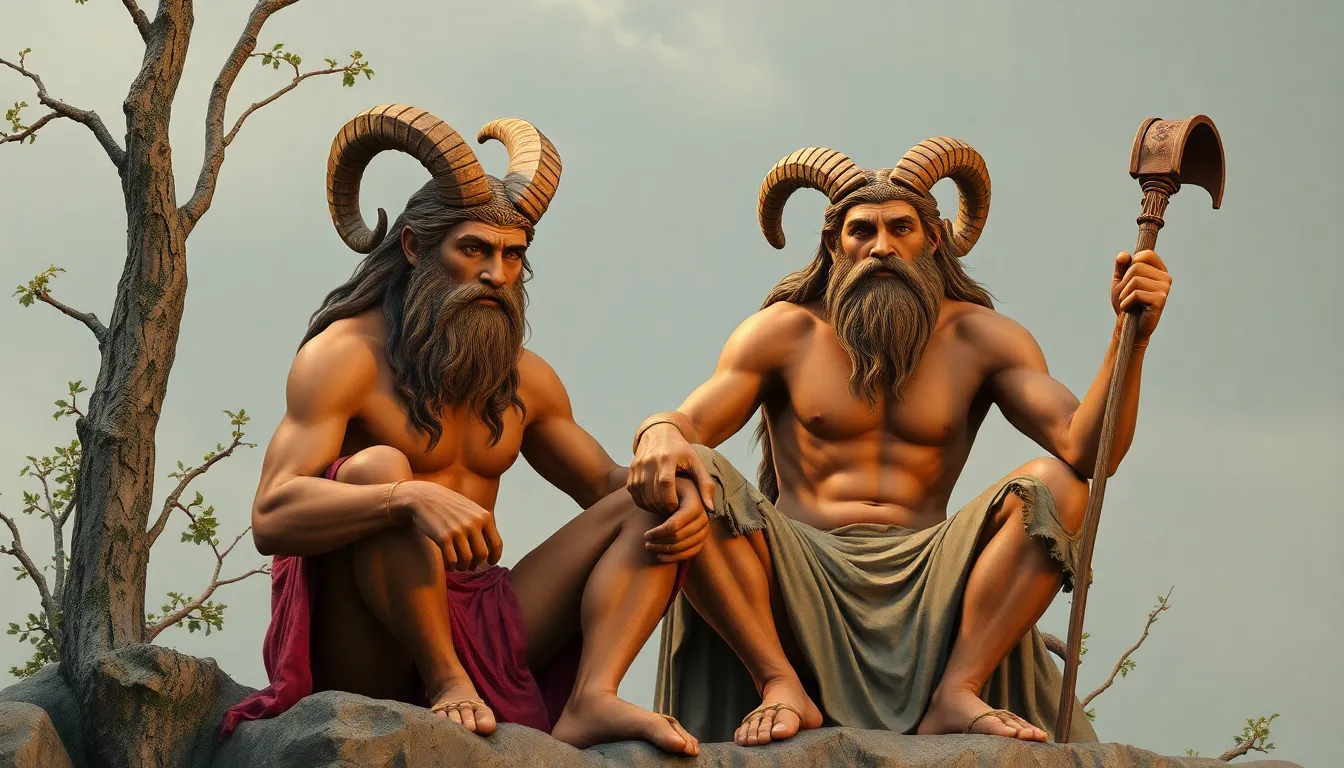Satyrs in Folktales: How Their Stories Have Endured Over Time
I. Introduction
In the rich tapestry of Greek mythology, satyrs are among the most captivating and enduring figures. Defined as half-human, half-goat beings, satyrs are often characterized by their playful, mischievous nature, and love for revelry. With their goat-like legs, pointed ears, and fondness for music, particularly the flute, they embody the spirit of nature and the primal instincts within humanity.
In ancient Greek folklore, satyrs held significant roles as companions to Dionysus, the god of wine, fertility, and festivity. They symbolize the connection between humanity and nature, often representing the unrestrained aspects of human desire and the chaos of the natural world. This article seeks to explore the enduring nature of satyr stories, tracing their historical origins, evolution over time, and their presence in various cultures around the globe.
II. Historical Origins of Satyr Mythology
The roots of satyr mythology can be traced back to early Greek art and literature. They are frequently depicted in vase paintings, sculptures, and pottery, often engaged in festivities or pursuing nymphs, symbolizing their connection to nature and the wild. The satyr’s presence in ancient texts is notable, particularly in the works of renowned poets and playwrights.
- Homer: In “The Iliad” and “The Odyssey,” satyrs are mentioned as part of the retinue of Dionysus.
- Hesiod: In “The Theogony,” satyrs are linked to the rustic deities of nature.
Satyrs played a prominent role in the Greek pantheon, often depicted as followers of Dionysus, embodying the joy and chaos associated with the god of wine. Their relationship with nature is crucial, as they are often seen as guardians of the wilderness, representing both the beauty and the untamed aspects of the natural world.
III. Evolution of Satyr Narratives Through the Ages
As Greek civilization transitioned into the Roman Empire, the narratives surrounding satyrs began to evolve. The Romans adopted many Greek myths, including those of satyrs, but often transformed their characteristics and roles. In Roman mythology, satyrs became known as fauns, retaining their playful and mischievous traits but often taking on a more pastoral image.
With the rise of Christianity, the portrayal of satyrs shifted dramatically. They were often demonized, seen as symbols of hedonism and excess, which contrasted sharply with Christian values. This negative portrayal persisted through the Middle Ages.
However, during the Renaissance, there was a revival of interest in classical themes, including mythology. Artists and writers began reinterpreting satyrs, often romanticizing them and reinstating their joyful and carefree nature.
IV. Satyrs in Folktales Across Different Cultures
Satyrs have counterparts in various cultures, reflecting similar themes of nature and revelry. For example:
- Fauns: In Roman mythology, fauns are similar to satyrs, embodying the spirit of the forest and often depicted as playful and musical.
- Forest Spirits: In Slavic folklore, figures like leshy represent the wild and untamed aspects of nature, similar to satyrs.
Across Europe, regional variations of satyr-like characters can be found in folktales. In the British Isles, the “Green Man” symbolizes nature and fertility, while in Scandinavian folklore, creatures like trolls exhibit similar traits of mischief and connection to the wild.
Moreover, non-Western cultures also have their own versions of nature spirits that share characteristics with satyrs, showcasing a universal fascination with the interplay between humanity and the natural world.
V. Thematic Elements of Satyr Stories
Common themes permeate satyr narratives, providing rich material for analysis:
- Nature: Satyrs are intrinsically tied to the natural world, reflecting humanity’s connection to nature.
- Revelry: Their love for music, dance, and wine underscores the celebration of life and the senses.
- Duality of Human Nature: Satyrs embody both the civilized and wild aspects of humanity, illustrating the internal conflict between order and chaos.
Satyrs symbolize instinct and freedom, representing the animalistic desires within humans. Their stories often highlight the tension between societal norms and the primal urges that lie beneath the surface. The interplay between chaos and order is a recurring motif, as satyrs navigate a world governed by rules while embodying the spirit of freedom.
VI. Satyrs in Modern Literature and Media
In contemporary literature and media, the allure of satyrs continues to thrive. Modern retellings of satyr stories can be found across various genres:
- Novels: Fantasy authors often draw inspiration from satyr mythology, incorporating these figures into their worlds.
- Films: Movies depicting ancient myths or fantasy realms frequently feature satyr-like characters, showcasing their whimsical and chaotic nature.
The resurgence of interest in mythology and folklore in pop culture has led to a renewed fascination with satyrs, as audiences are captivated by their unique blend of mischief and charm. Their presence in modern fantasy literature often serves as a reminder of the significance of nature and the primal instincts that shape human experience.
VII. The Enduring Appeal of Satyr Stories
The psychological and emotional resonance of satyr narratives contributes to their enduring appeal. These stories delve into themes of desire, freedom, and the human condition, allowing audiences to explore their own instincts and societal constraints. Satyrs serve as a lens through which we can examine our desires and the tension between civilization and nature.
Moreover, satyr stories continue to captivate audiences today because they resonate with the universal human experience. The themes of chaos, revelry, and the search for freedom speak to contemporary issues, encouraging reflection on the balance between societal expectations and personal desires.
VIII. Conclusion
The legacy of satyrs in folklore is a testament to their enduring nature and significance in mythology. From their origins in ancient Greece to their adaptations in modern literature, satyrs continue to inspire and intrigue. Their stories invite exploration into the complexities of human nature, the relationship with the natural world, and the celebration of life.
As we preserve these narratives, we ensure that the spirit of satyrs remains alive, encouraging future generations to delve into the rich world of mythology and the lessons it imparts about freedom, chaos, and the primal essence of humanity.




